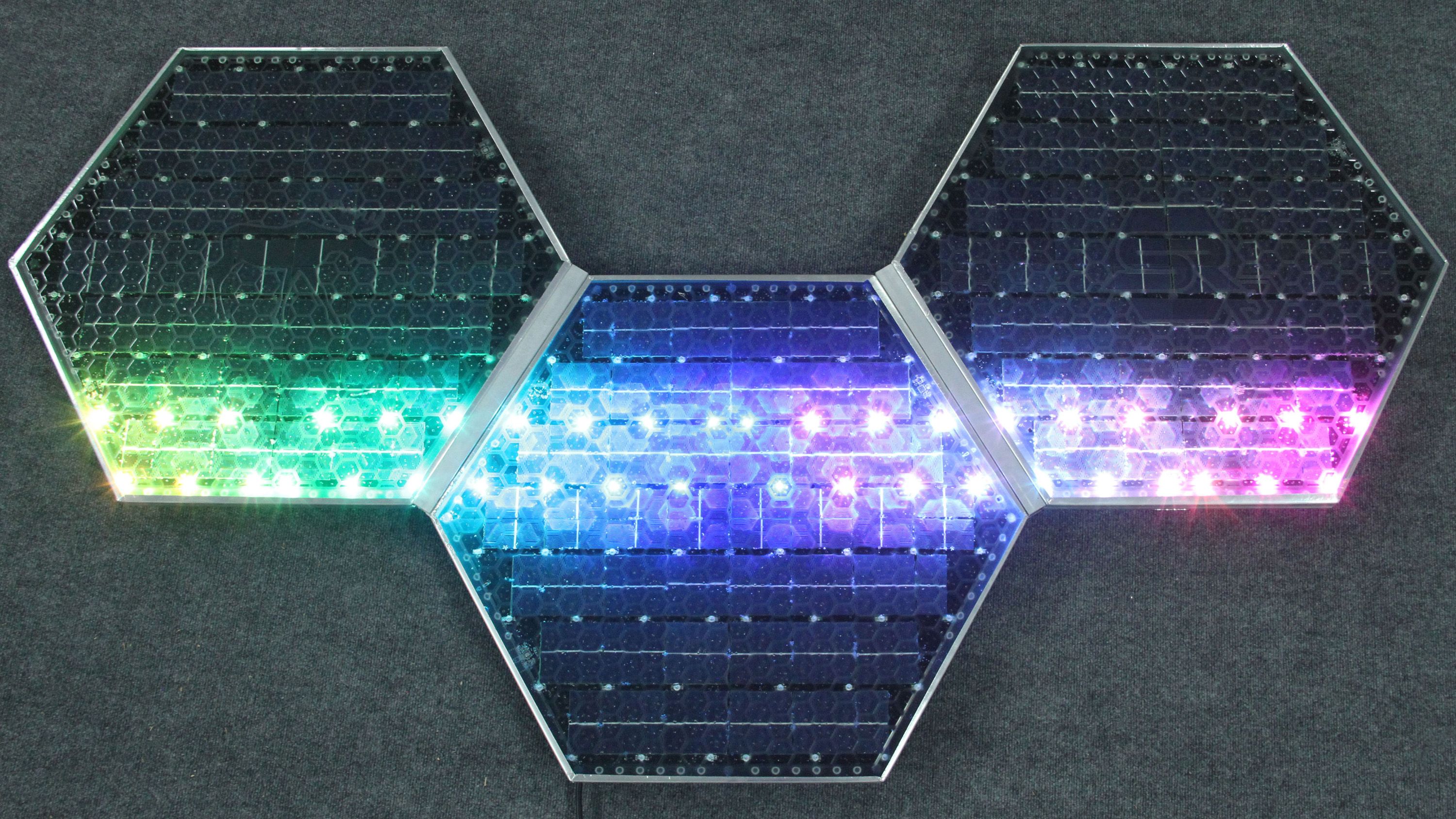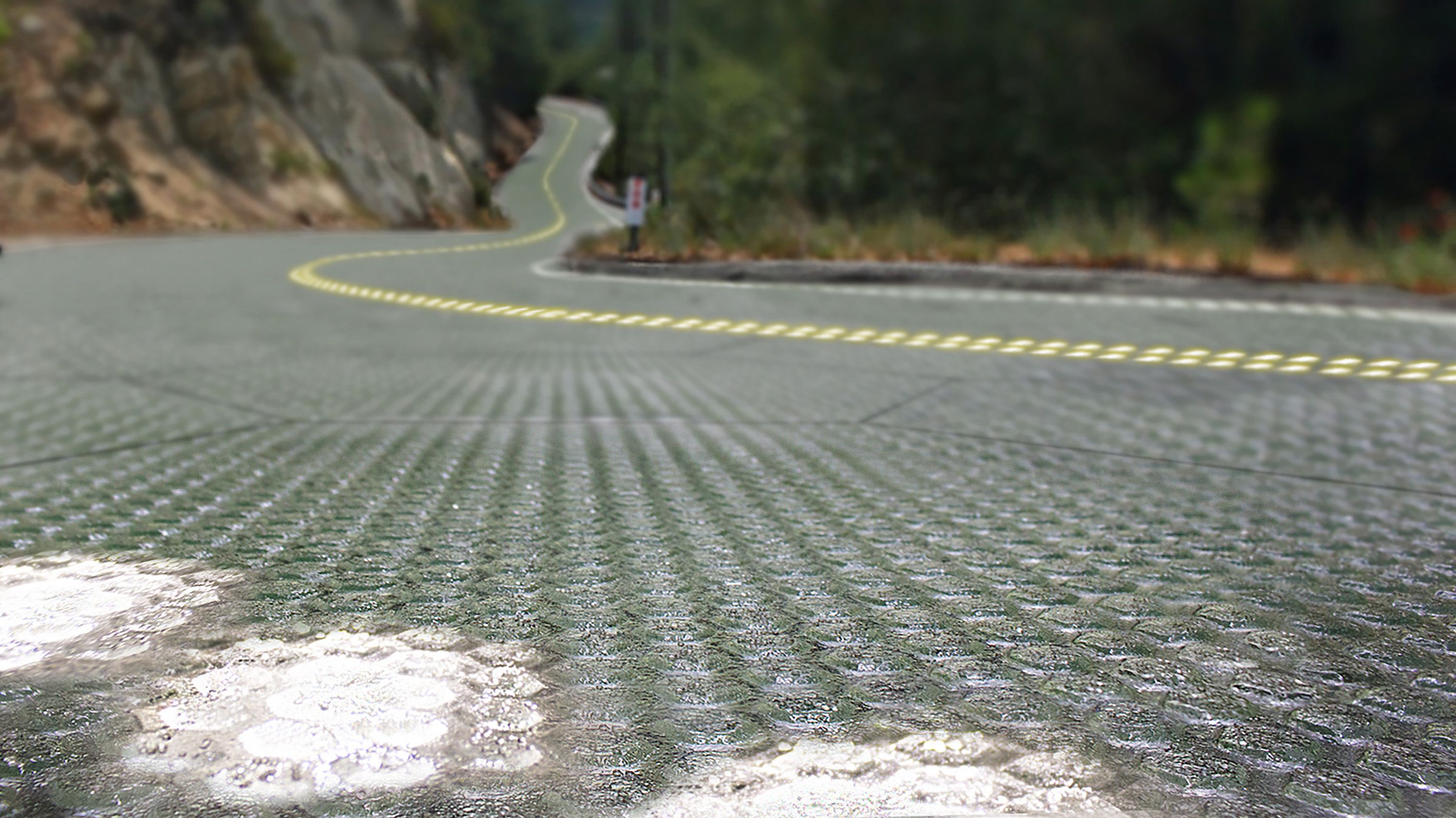We’re already more than halfway through October, and winter is just around the corner. And for those of us residing in the northern latitudes of the U.S., the winter months usually bring lots of the white stuff, making for treacherous, slippery conditions out on the road. To help combat the traction killing weather change, most highway departments resort to spreading salt-like chemicals on the blacktop. While useful in combating ice and snow, the compounds can leak into waterways, doing harm to the local environment, including pets. Solar Roadways says it’s got a better solution – modular solar panels you can drive on.
Essentially hexagonal plates of tempered glass with electronic guts, the Solar Roadway panels are equipped with energy-gathering solar cells that produce electricity when exposed to light. The panels are textured, offering the same traction as asphalt, and can be installed on top of existing blacktop. The applications are many, and include highways, driveways, parking lots, and bike paths.
The panels are strong enough to support semi-trucks, and are installed with microprocessors that allow them to create a “smart” road network to relay road info to a central control hub, or potentially other cars. The panels also have LEDs, which illuminate lane lines and traffic signage without the use of paint. And of course, there are heating elements to melt away snow and ice without the use of chemicals.
According to the Spokane-based CBS affiliate KREM 2, the Solar Roadways panels will soon see their first public test in the U.S., and will be used to power a restroom and fountain.
Continue reading for the full story.
Why It Matters
Solar Roadways is based out of Sandpoint, Idaho, and comes from humble beginnings. Founded in the garage of co-inventors Scott and Julie Brusaw, Solar Roadway’s product has been in development for roughly seven years. Now, the company is looking mighty convincing, especially after collecting over $2.2 million in a wildly successful Indiegogo campaign. Currently, the company’s freshly manufactured panels are slated for their first big public test, and things are looking quite promising.
And of course, $2.2 million might seem like a huge amount of cash. But considering the potential impact of a project like this, Solar Roadways is gonna need all the funding it can get.
Here’s how it breaks down – Solar Roadways estimates that if we cover all paved surfaces in the lower 48 states with the company’s hexagonal panels, including all the roads, sidewalks, parking lots, etc., we’ll produce roughly three times more energy than we currently consume.
That’s kinda insane, if you think about it. Producing three times the energy we consume as a nation from clean renewables would make a huge dent in emissions, and open up EV technology in a huge way. Conceivably, the panels could be outfitted with wireless charging technology that wouldn’t just cut battery recharge times, but eliminate them altogether. Suddenly, the internal combustion engine is the option with range anxiety.
Of course, any enthusiasm behind this project must be tempered with the realization that scaling up production and installation to cover every paved surface in America would be an absolutely monumental public project.
Cost is definitely an issue, and I would love to know how much would it cost to install this stuff on a one-mile stretch of highway. Yes, there would theoretically be savings over time, but how quickly will the tiles pay for themselves? Maintenance is another issue. What happens if too many tiles fail? Will the lane lines disappear?
Of course, these are all questions best left until after Solar Roadway’s first public test. Until then, it’s a tantalizing new technology to keep an eye on for the future.


